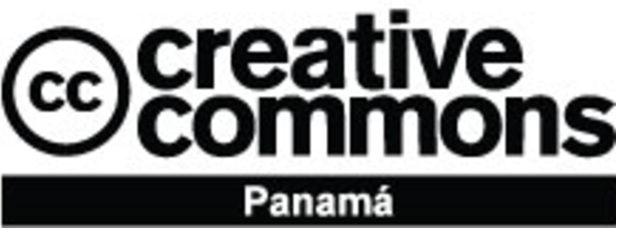Manuscripts sent to SALUTA Magazine must be original and unpublished and must not be simultaneously in the process of publication in other magazines, compilations or any other means of publication. The content of the publications and the links suggested in them are the sole responsibility of the authors and not of the METROPOLITAN UNIVERSITY OF EDUCATION, SCIENCE AND TECHNOLOGY
(UMECIT) or the magazine SALUTA. They are protected by international copyright laws as well as the logos of UMECIT AND SALUTA MAGAZINE, hence their reproduction is totally prohibited. The copyright will belong to the UMECIT.
Under a Creative Commons Attribution License authors may share work with acknowledgment of authorship of the work and initial publication in this journal.



Abstract
Virtopsy and mass spectrometry are emerging technologies in forensic medicine that aim to change the way autopsies are performed and evidence is examined. Virtopsy uses techniques such as computed tomography (CT) and magnetic resonance imaging (MRI) to make three-dimensional representations of the body without the need for incisions. This helps study injuries and identify trauma. On the other hand, mass spectrometry makes it possible to identify and quantify substances at precise molecular levels, which is essential for the identification of toxins, drugs and other relevant components in forensic investigation cases. The use of these techniques not only improves the information available to forensic doctors, but also contributes to preserving the dignity of the deceased and can influence the judicial verdict by providing clear and objective evidence. This article will examine case studies and practical applications of these technologies, examining their limitations and future potential in the forensic field.
Keywords
References
Baena S. Densitometría y data de la muerte. Tesis Doctoral. Universidad de Zaragoza. Junio de 2001.
Carolina Gallego Londoño, Diego Fernando Afanador Restrepo, Maria Camila Dávila Castañeda, Sebastián Andrade Ramírez. . La evolución de la Virtopsia, las ventajas frente a la autopsia y el impacto en el área de la salud: Una scoping review. J. health med. sci., 10(3):11-20, 2024.
CDC. (2024). High-Resolution Mass Spectral Libraries for Drug and Toxin Analysis. Center for disease control and prevention. https://www.cdc.gov/chemical-threats-and-toxins-laboratory/php/opioids-laboratory/high-resolution-mass-spectral-libraries-for-opioid-analysis.html
Euroinnova. (2020). ¿En qué consiste la virtopsia? Euroinnova. https://www.euroinnova.com/medicina/articulos/virtopsia
Fariña, J.; Millana, C.; Fdez-Aceñero, J.M. Ultrasonographic autopsy (echopsy): A new autopsy technique. Virchows Archiv, 440: 635-639, 2002. https://doi.org/10.1007/'>https://doi.org/10.1007/ s00428-002-0607-z
Gallo, R. Á., de la Carrera, N. D. D., & Foyo, R. (2023). Relevancia de la virtopsia como método de inspección corporal no invasivo en las Ciencias Forenses.
Garfia A. Técnicas de autopsia en el fin del milenio. Las opsias. Panorama general e indicaciones. Curso sobre "Técnica avanzada de autopsia". Centro de Estudios Judiciales. Administración de Justicia. Madrid 26-28 de octubre de 1998.
Jian, J.Q.; Liu, N.G.; Chen, Y.J. Research progress in virtopsy of drowning. Journal of Forensic Medicine, 35(6): 328-331, 2019. https://doi.org/10.12103/j.issn.1004'>https://doi.org/10.12103/j.issn.1004- 5619.2019.06.013
Jiménez, M. C. M. (2013). Validación del método de análisis de residuos de disparo por espectrometría de masas con plasma acoplado inductivamente en frotis de manos, en el Instituto Nacional de Medicina Legal y Ciencias Forenses regional Bogotá. Antistio: Revista del Instituto Nacional de Medicina Legal y Ciencias Forenses de Colombia, 1(1), 8-12.
Longdom. (2024). Espectroscopia de Masas en Estudios Forenses. Longdom. https://spanish.longdom.org/scholarly/mass-spectroscopy-in-forensic-studies-journals-articles-ppts-list-1978.html'>https://spanish.longdom.org/scholarly/mass-spectroscopy-in-forensic-studies-journals-articles-ppts-list-1978.html
Mass Spectroscopy in Forensic Studies (30 de noviembre de 2024) https://spanish.longdom.org/scholarly/mass-spectroscopy-in-forensic-studies-journals-articles-ppts-list-1978.html'>https://spanish.longdom.org/scholarly/mass-spectroscopy-in-forensic-studies-journals-articles-ppts-list-1978.html
Robb, RA. Three-Dimensional Visualization in Medicine and Biology. En: Bankman IN. Handbook of Medical Imaging: Processing and Analysis. Academic Press, 2000 pp. 685-712.
Schwoeble A, Exlin D . Current Methods in Forensic Gunshot Residues Analysis. Portland: CRC Press; 2000. https://doi.org/10.1201/9781420042573'>https://doi.org/10.1201/9781420042573
Skoog D. Principios de análisis instrumental. Quinta edición. Madrid: McGraw-Hill; 2001.
Taylor H. lnductively Coupled Plasma Mass spectrometry. Practices and Techniques. California: Academic Press; 2001. https://doi.org/10.1016/B978-012683865-7/50006-5'>https://doi.org/10.1016/B978-012683865-7/50006-5
Thali MJ, Braun M, Buck U, Aghayev E, Jackowski C, Vock P, Sonnenschein M, Dirnhofer R. VIRTOPSY--scientific documentation, reconstruction and animation in forensic: individual and real 3D data based geo-metric approach including optical body/object surface and radiological CT/MRI scanning. J Forensic Sci 2005 Mar;50(2):428-42.
Thali MJ, Yen K, Schweitzer W, Vock P, Boesch C, Ozdoba C, Schroth G, Ith M, Sonnenschein M, Doernhoefer T, Scheurer E, Plattner T, Dirnhofer R., Virtopsy, a new imaging horizon in forensic pathology: virtual autopsy by postmortem multislice computed tomography (MSCT) and magnetic resonance imaging (MRI)--a feasibility study. J Forensic Sci 2003 Mar;48(2):386-403.
Thayyil, S.; Sebire, N.J.; Chitty, L.S.; Wade, A.; Chong, W.; Olsen, O.; Gunny, R.S.; Offiah, A.C.; Owens, C.M.; Saunders, D.E.; Scott, R.J.; Jones, R.; Norman, W.; Addison, S.; Bainbridge, A.; Cady, E.B.; Vita, E.D.; Robertson, N.J.; Taylor, A.M.; MARIAS collaborative group. Post-mortem MRI versus conventional autopsy in fetuses and children: a prospective validation study. The Lancet, 382(9898): 223-233, 2013. https://doi. org/10.1016/S0140-6736(13)60134-8
Thomas R. Practical Guide to ICP-MS. New York: Marcel Deker lnc.; 2004. https://doi.org/10.1201/9780203027073
Yen K, Vock P, Tiefenthaler B, Ranner G, Scheurer E, Thali MJ, Zwygart K, Sonnenschein M, Wiltgen M, Dirnhofer R. Virtopsy: forensic traumatology of the subcutaneous fatty tissue; multislice computed tomography (MSCT) and magnetic resonance imaging (MRI) as diagnostic tools. J Forensic Sci 2004 Jul;49(4):799-806.
Downloads
Publication Facts
Reviewer profiles N/A
Author statements
- Academic society
- Universidad Metropolitana de Educación, Ciencia y Tecnología
- Publisher
- Universidad Metropolitana de Educación, Ciencia y Tecnología



















